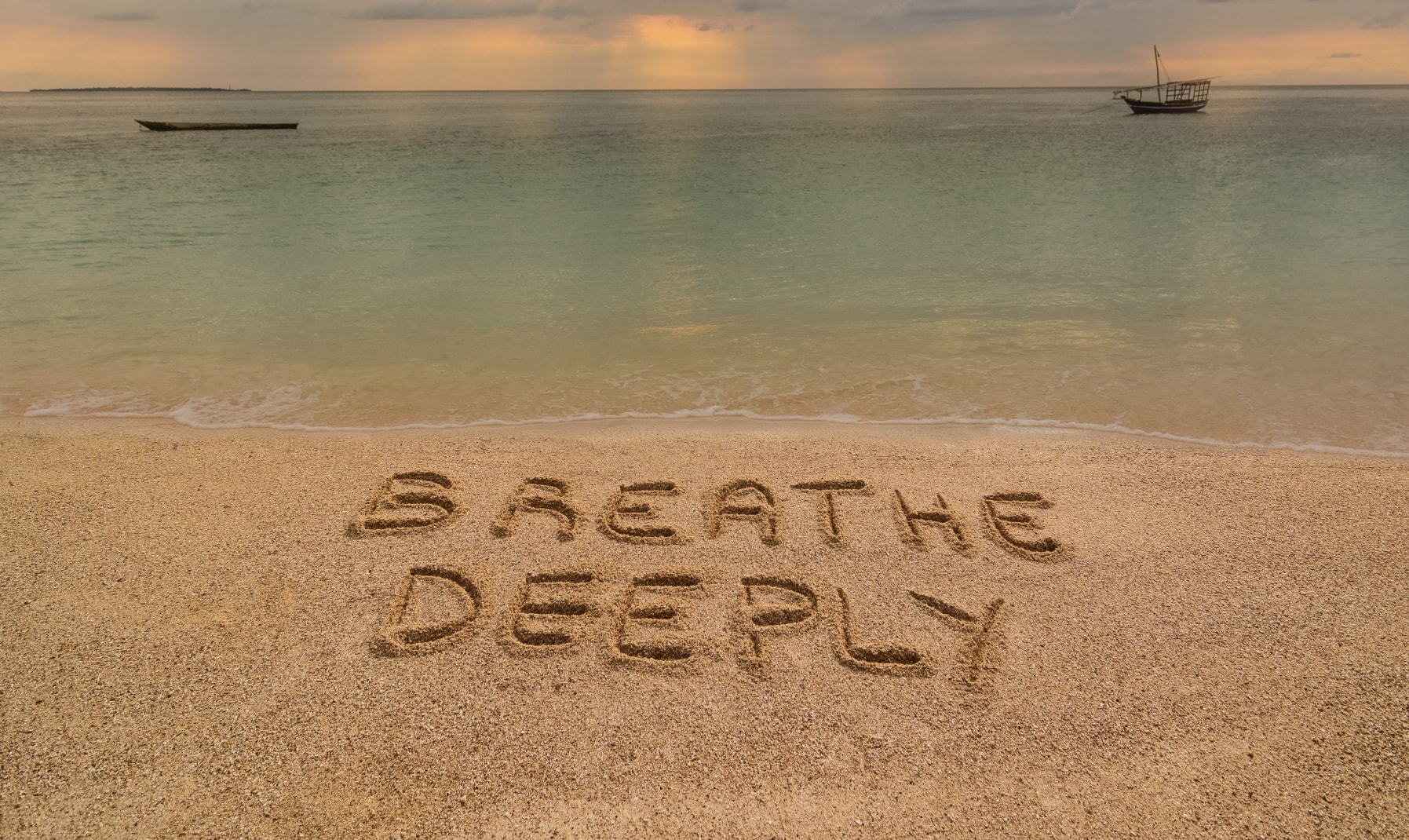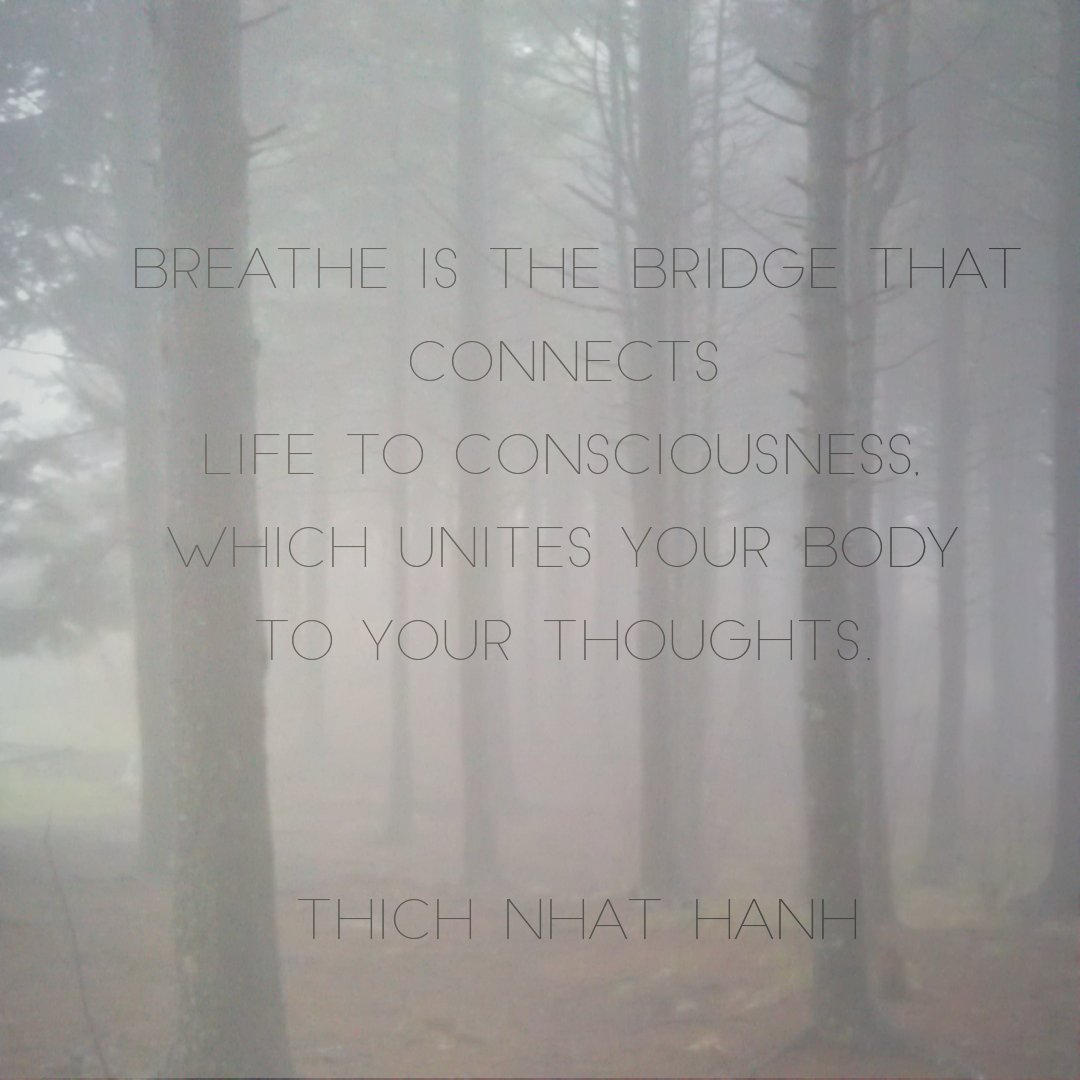
“Bring your attention back to the breath.”
“Keep breathing!”
“Breathe into your edges and soften.”
The list goes on, but I think you get the point. Breath is important in yoga practice.
These prompts happen when the yoga bliss of the class gets overtaken by the pain of settling or transitioning into a pose and the group’s Darth Vader breathing comes to a screeching halt.
Sometimes distracting yourself by thinking about the massage you have scheduled later, or your dinner date helps you get through the pain.
Sometimes the mind is not so kind, and it trash talks your struggles the whole way through the practice.
Regardless, these thoughts are the mind’s feeble attempts at coping with the difficult task at hand… thanks, but no thanks. It thinks that the further it can pull awareness away from the body, the further it will get from the present moment, where the discomfort is. It doesn’t have the greatest sense of being part of your body and a bigger system. Ego. Anyway, when this happens the breath goes, catching or shallowing, the mind kicks into gear, and it becomes a “How much longer?!” situation in the pose.
Awareness of breath
Dis…com….fort….
Breath faltering
Mind takes over…
Breathe?!
“Bail!”
Breath, in the practice of yoga as in meditation and many mindfulness techniques, becomes the concrete, tangible link between body, mind, and present experience.
So if we allow ourselves to dissolve into our mind’s escape plan, we are not only taking ourselves out of our bodily experience but also out of the present moment… Lights off, no one home.
For example, as you transition from plank into a three-legged dog…
What happens to your breath?
Where does it go in that moment?
Where does your mind go?
What were we saying?
For many the breath is lost.
It gets lost right in the back of your triceps, or in your lower abdominal muscles as you push up, and back like a teeter-totter.
It gets lost in your body to the places of most difficulty, during the moments of most difficulty.
As these difficult moments of pain or frustration, your ‘edges,’ are encountered in yoga or off the mat, it triggers in the mind a reaction of pulling away, via distraction, or getting hung up on how awful it all must be.
Although this is well meaning on the part of your mind, it backfires by making things more difficult, because it often brings judgement and self criticism with it. Continuing to breathe, which helps you to stay in your body’s experience, in the present moment, rather than wandering off with the mind, is the real coping skill.
So what if you begin viewing each day as your yoga practice, keeping the intention of staying with your breath?
Chances are this cycle, which may be or become obvious in your practice, is similar to how you function in your daily grind.
You could be calmly breathing, then that same wanting to escape feeling could come up during a difficult conversation with your boss or partner. Breath lost.
That self- destructive badgering when you’re not measuring up to your expectations could happen when you bomb some work or school assignment. Tightness in the chest.
Try, just even for a day, to frame each errand, chore, and engagement as an asana integral to the practice of your daily life.
Give each task and interaction the same attention, and breath you would a difficult inversion or balance pose.
Remove judgement around faltering, and stories around what it all means if you do.
No matter how mundane, boring, or trying the conversation, keep attention with the breath- allowing your breath to lead, just as you would in your practice on the mat. Even if you feel like you are not listening or engaged with what is happening, you stay engaged at least to the extent you can stay with your breath in the moment.
Get to know yourself and wonder….
What makes my breath catch or become shallow?
When does my mind take over?
What does it have to say?
How do I get back to my breath?
Have you ever had the interview question, “How do you respond to difficulty?”
Recognizing your cycle of experience in the moment, by noticing where your breath goes, and how your mind responds, becomes vital to developing your authentic answer to this question.
Bring awareness, observe, and soften where you can, by staying with your breath and the sensations in your body, rather than the thoughts of failure, checking out, and avoidance offered up by the mind.
Knowing what it is like to be you in any given moment is so exquisitely personal that no one else can do it and when the breath is overlooked, you lose out on being in relationship to your body, in its present moment experience. Difficulty can’t be avoided, so it’s a fool’s errand on the part of the mind. Stick with the breath.
This article is part of a developing series for Be Here Now Network, exploring the 8 Limbs of Yoga, and the ways in which we can deepen our yoga practice by taking its teachings off the mat, and into our daily grind. Continue the series by discovering the first limb of yoga, The Yamas.
Amanda Hart is currently studying art therapy and clinical mental health counseling in the Graduate School of Transpersonal Psychology at Naropa University. She is a 250-hour RYT. Born in the Blue RIdge, and currently transplanting in the Rockies.
This article was written for Be Here Now Network and is not to be replicated without consent.
Feedback welcome!


